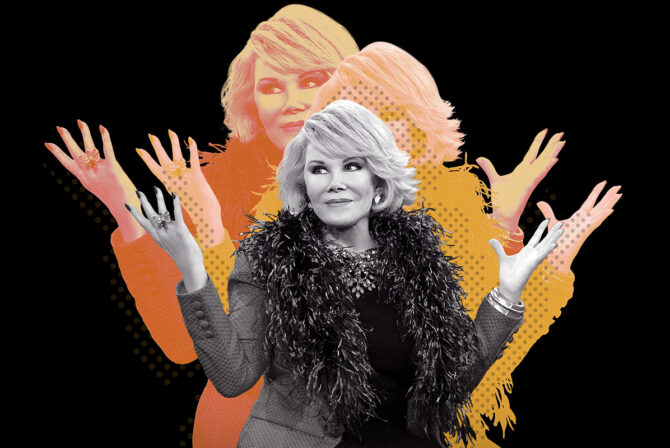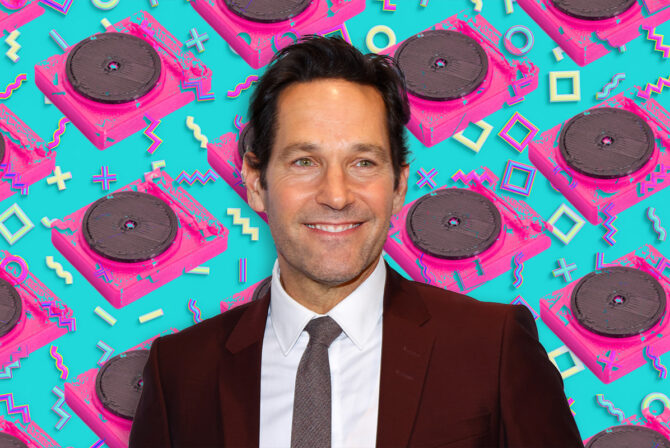“You be walking down the street and then notice my restaurant,” my daughter, who I like to call Hot Shot, directs me one snowy winter day. She was three at the time, and beginning to take her imaginary play seriously. I follow her lead and dine on pretend tofu and broccoli (really a pile of wooden blocks) while she brings me invisible change for a bill I have yet to pay.
“I’m going to have a vegetarian restaurant when I grow up,” she announces after a while. “You and Momma can come whenever you want and you don’t have to pay.”
“Wonderful!” I beam, feeling like I will indeed be taken care of in my old age.
“But Nana can’t come,” Hot Shot adds quickly, giving me a knowing look. “You know, ’cause she’s Christian.”
SCREECH. That’s the sound of the wheels of parenthood skidding across my brain.
“How come Christians can’t eat in your restaurant?” I ask in my nonchalant voice, which I’m told is about an octave higher than my regular voice.
“Because it’s a vegetarian restaurant,” she answers offhandedly, her attention mostly focused on a pot of hot blocks. “Christians eat meat,” she replies with just a touch of tedium at my ignorance.
“Ohhhh,” I sigh, finally getting it. This is not discrimination; it’s identity entanglement.
Identity Mix-Up
It’s bound to happen occasionally. My kids have a lot of identities to balance; they are the black, Jewish, adopted children of white lesbian mothers, and part of a family with multiple generations of interfaith marriages on both sides. Oh, and we’re vegetarian too. With cultural input coming from all these sources, it’s easy for lines to get crossed. Picking up on similarities and differences, learning to generalize from one situation to another–that’s what toddlers do. If you’re not careful, pretty soon you end up with a cultural rulebook that reads: my moms light candles on Shabbat because they’re lesbians; I’m the only kid who doesn’t get to keep the water gun party favor because I have brown skin; and my grandmother eats meat because she’s a Christian.

Vegetables: not just for Jews anymore.
Hot Shot and I sort out a list of everyone we know, identifying each as Jewish, Christian, Muslim, or Buddhist, and then make note of their eating habits. From there we see what kind of generalizations we can make. It turns out most of the vegetarians we know are Jewish, and most of the Christians we know are carnivores, but it’s also clear that, based on our sample, religion is not a reliable predictor of meat-eating status.
“And besides,” I say to Hot Shot, “people who eat meat can still eat at a vegetarian restaurant. They don’t have to eat meat at every meal.”
“Okay, Nana can come,” she shrugs. “Now can we stop talking and play?”
A Boost of Judaism
Promoting positive development of multiple identities is our task as parents, and if we’re doing it well, occasionally we can get the columns to line up. For the first three years of Hot Shot’s life I worked at a community center where a racially diverse crowd of kids joined us for homework help everyday after school. My partner often stopped by the center with Hot Shot because we could see she was relieved to be in a room where she didn’t stand out. To be someplace where the big girls doted on her without touching her hair or asking about her cornrows or beads.
When I eventually left that position to work for a synagogue, I mourned the loss of what the community center had offered Hot Shot: the opportunity to be in a numeric racial majority. What I didn’t realize was that my work at the temple would offer the same boost to her Jewish identity; my saturation in Jewish culture made our lives Jewish in ways we didn’t realize we were missing before. In the span of a year Hot Shot went from telling us she would be Christian when she grew up, to delighting in the opportunity to peek at the Torah with our Rabbi, to asking if we will please sit in the front row of her Bat Mitzvah, and to understanding that we eat challah, her most treasured treat, for only one reason: we are Jewish.
When the time came for Hot Shot to begin pre-K at the Jewish day school she was pretty much ready to be a rabbi herself. Prior to the start of school she and my partner went shopping for the list of required supplies, including kosher snacks to contribute to the weekly Shabbat party stash. Hot Shot’s first foray into the world of searching for kosher food left her abuzz with her latest Jewish learning. When I came home from work that day she proudly showed me the Orthodox Union symbol (a “U” encircled by an “O”) on each of the boxes of cinnamon graham crackers. “They’re kosher!” she said excitedly.
“So are the tissues,” my partner added with an amused grin.
My quizzical look was answered as Hot Shot dragged me into the front room where her pile of supplies was stacked. Each item–tissues, markers, pencils, glue sticks–had been marked carefully, in permanent marker, with the encircled “U.”
“What did you do?” I asked, successfully suppressing my laughter.
“I made them all Kosher!” she shouted, excitement dancing her around the room. “Jews can use them!”
Okay, so some of the lines are still crossed.







